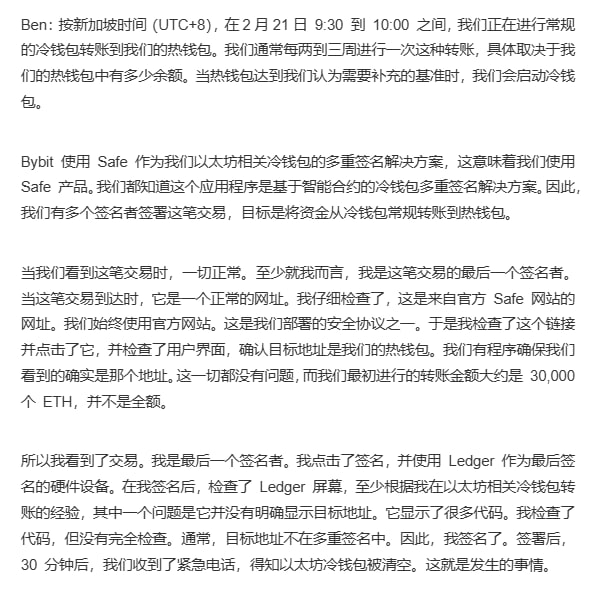From Mr. Zhou's statement, it appears that he was the last to sign before the theft occurred. When he signed, the content was incomprehensible, which left him somewhat confused. At that moment, he should have sought professional help to interpret the signature content, but unfortunately, Mr. Zhou accidentally submitted it.
Before Mr. Zhou signed, there was a transaction creator and an additional signer. The second signer cannot change the signature content and likely also found it incomprehensible. Therefore, the issue must lie with the first person who created the transaction. This cannot be explained by a virus; after so many days, the devices involved in the transaction have been repeatedly checked by various security companies, and no traces of malware have been found.
This indicates that the first person has a problem. This individual certainly did not intentionally upgrade the contract. To deceive the transaction creator, it would require altering the method called on the contract from Transfer to Approve when sending to the safe server, or possibly the server returned a signed object that was tampered with. The issue likely lies in the transmission process involving a "man-in-the-middle" attack, as engineers at these exchanges must use their company's internal VPN, which raises the question: could there be an issue with this VPN?

免责声明:本文章仅代表作者个人观点,不代表本平台的立场和观点。本文章仅供信息分享,不构成对任何人的任何投资建议。用户与作者之间的任何争议,与本平台无关。如网页中刊载的文章或图片涉及侵权,请提供相关的权利证明和身份证明发送邮件到support@aicoin.com,本平台相关工作人员将会进行核查。




